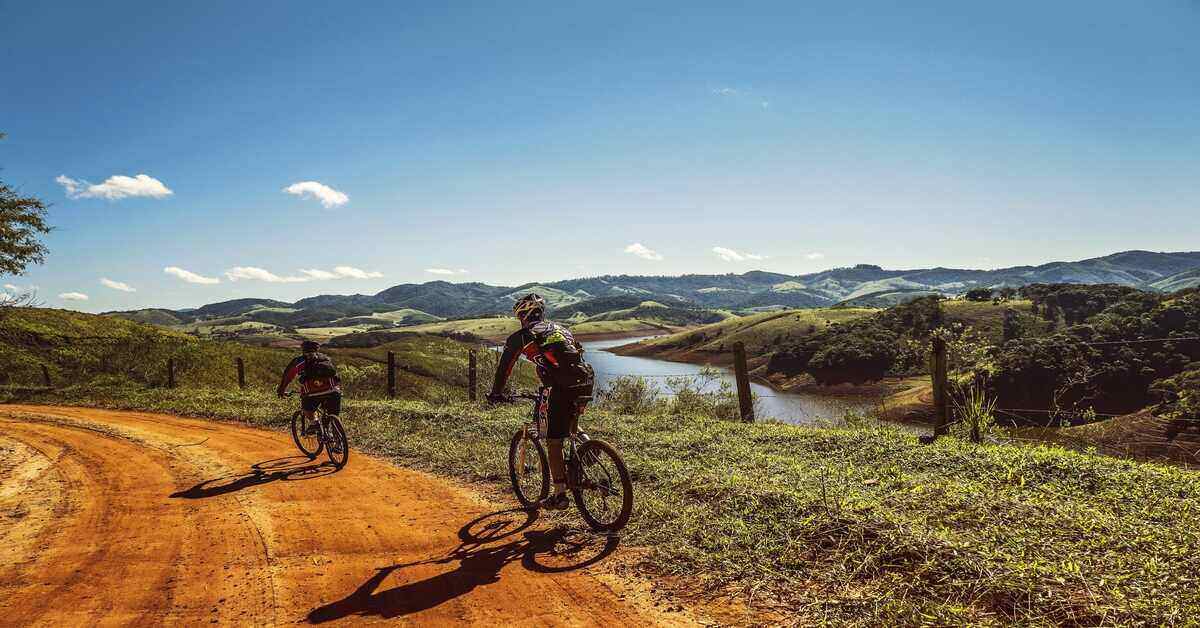Hiking helps you stay in shape, but it’s also hard work. You need to be physically prepared for your hike. There are several ways you can prepare yourself before you head out on the trail for the first time. With some basic preparation and training, you’ll be ready for any hiking adventure that comes your way! Here are some tips for how to get in shape for hiking:
How to Get in Shape for Hiking
1. Begin by walking daily
Start with 30 minutes of walking a day if you’re not already in the habit. If you need to, start by setting your alarm 10-15 minutes later than usual so that you have time for your walk before work or school. After about two weeks, increase to 40 minutes until your body adapts to the increased activity level.
2. Start doing cardio exercises
The more aerobic shape you’re in, the more efficiently your body uses oxygen during exercise, and the longer you will be able to exercise before getting fatigued. A higher level of aerobic fitness also means that you’ll experience less stress on your heart, lungs, and blood vessels.
The best way to improve your aerobic fitness is by doing short bursts of intense exercise with periods of rest in between. For example, running fast for 10 seconds then jogging or walking at a slower speed for 30 seconds. Repeat this several times to build up endurance and strength over time.

Aerobic exercise should be done at least three times a week to get the most benefits. You can break it up into shorter 10-minute sessions if you don’t have time to exercise for longer periods. Here are some great aerobic exercises:
Brisk walking
Also known as power walking, it is a great way to improve your cardiovascular fitness and strengthen your muscles at the same time. Find a good location to walk, whether it’s in your neighborhood or a local park. Warm up by walking for five minutes at a steady pace. Increase the intensity of your walk so that you feel slightly breathless. This will build up your heart rate and oxygen intake.
Walk at this moderately intense level for 20-30 minutes, then cool down for five minutes by walking at a leisurely pace. Repeat this routine three times a week.
If you would like to take your brisk walking routine up a notch, head out onto hilly terrain or choose to walk with ankle weights. This will make your workout more strenuous and help tone the muscles in the lower part of your body. Here are some hiking tips for beginners.
Swimming
An excellent exercise because it works all the major muscle groups in your body simultaneously. It’s also gentle on your joints and is one of the safest forms of aerobic exercise. Warm up for five minutes by doing some light stretches or strolling around the pool. Then increase your heart rate by swimming faster for 30-60 seconds.
Swim at this moderately intense level for 20-30 minutes, then cool down by swimming slowly for five minutes. Repeat this routine three times a week.
If you’re new to swimming and aren’t confident in the water, try starting off with beginner classes or private lessons. This will help build up your fitness and get you comfortable using the strokes in a safe environment.
Cycling
This can be an easy way to build up your aerobic fitness if you enjoy the outdoors or the idea of commuting to work by bike. Warm up for five minutes by riding slowly, then increase your pace until you feel slightly breathless. Cycle at this moderately intense level for 30-45 minutes, then cool down for five minutes by riding at a casual pace. Repeat this routine three times a week.
If biking is your major form of exercise, try varying the terrain you ride on to build strength in different parts of your lower body and increase endurance in your quads, hamstrings, and glutes. This will help prevent muscular imbalances that can cause injury. Plus, it will help mimic the type of terrain you’ll encounter on your hiking trips.

If you have health problems like heart disease that could be affected by strenuous exercise, speak to your doctor before embarking on an aerobic fitness routine. There are lots of ways to get stronger and fitter without putting too much strain on your heart.
3. Start weight training
If you’re already a runner or a cyclist, then it’s time to start some weightlifting. The best way is to work out your major muscle groups (chest and shoulders, back and arms, abs, thighs, calves, and shins) two to three times a week. Use machines, free weights, or your own body weight to do the exercises.
Take this opportunity to strengthen your feet by wearing hiking shoes that fit properly and breaking in new boots before the hike. If you don’t have hiking shoes yet, then get one with high ankle support to protect you from sprains. It is better not to wear new boots on a hike because it takes time for them to conform to your foot. Remember that you need new boots every few years because they get worn out from your sweat.
4. Drink plenty of water, especially before you exercise
Your body needs water to function correctly. If you don’t drink enough water before exercise, your performance can suffer, and you may feel sluggish or lightheaded. Drinking water while exercising is just as important because it helps keep your energy up and prevents dehydration. Try drinking 8-16 ounces of fluid 30 minutes before your workout. If you exercise for more than an hour, carry a water bottle and sip on it throughout your workout.
Water is also essential to keep your body cool during exercise because it helps regulate the temperature in your blood vessels. This can make exercising very difficult when dehydrated because your muscles aren’t exposed to enough oxygenated blood flow. It can lead to muscle fatigue. It can also lead to heatstroke and heat exhaustion, so it’s important to stay hydrated.

5. Walk up hills instead of taking the escalator or elevator whenever possible
Hiking can be hard work that gives you a great workout, but if you want to get in shape for hiking, try walking upstairs instead of taking the escalator or elevator whenever possible. Stairs are always preferable because they give your muscles an extra challenge by increasing the angle of the climb. This also makes your heart beat faster during exercise and enhances your cardiovascular endurance.
Also, join a group of people who go hiking frequently. They will help you get ready for your hiking goals and will push you harder than if you were alone.
If it is not possible to join a group, consider walking with other people in the location that you will hike [or some other type of workout]. This will keep you from taking extended breaks and will motivate you to get back to your workout. Check out more advantages of hiking.
6. Plan outdoor hikes that are challenging but not impossible to complete
If you are trying to get in shape for hiking or increase your fitness level, plan hikes that are challenging but not impossible to complete. Start with easier trails and gradually work up. Additionally, start during the weekdays when fewer people are on the trail as it is less crowded. If you push yourself too hard, then you might end up injuring yourself, which is the opposite of your goal.
Ensure you pack plenty of water and snacks. If the distance from your house to any trails will take longer than 30 minutes, then it might be better to drive to a trailhead instead of walking or biking there. For longer hiking trips, pack a tent and sleeping bag.
Warm up before your hike by walking and stretching. Walking for a couple of minutes around the block before you go on a hike will help warm up your muscles and mind.
If you plan to hike more than 10 miles, it is vital to stretch before the hike. The hamstring, quadriceps, hip flexors, ankles, feet, and calves all need to be warm if they are going to take the stress of hiking long distances. Do a few minutes of stretching for each before you embark on the hike and every half hour or so during the trek.
7. Look at a map of the trail before going hiking
Body awareness is very important to learn to prepare for outdoor activities like hiking. Go online and find a map of your desired route before going on a hike. You can then get an idea of where the hills and valleys will be, which will help you pace yourself for different terrain. Going online to find a map before going hiking also helps ensure you don’t get lost while on the trail since most maps also have trails marked out.
8. Focus on breathing when climbing up hills
Another great way to get in shape for a hike. When hiking uphill, most people tend to become short of breath and tire out really quickly. To avoid this, focus on deep breathing when you’re climbing uphill. Breathe through your nose rather than your mouth to get the best results possible for this activity.

Also, try yawning or hissing as you exhale to keep your lungs healthy and avoid becoming winded. For those who find themselves getting tired quickly when climbing uphill, focusing on their breathing helps increase stamina and make the hike more enjoyable overall.
9. Be patient and give yourself enough time to see results
Backpacking is one of the best ways to get in shape for hiking, but it isn’t enough on its own. You need to set a time each day or week to work on your fitness so that you can complete a backpacking trip.
If you don’t give yourself enough time to see results on your own, there’s no way you’ll be able to go backpacking and enjoy yourself. Give your body time to adapt – this is the only way you’ll get in shape for hiking and make sure that you have a great experience.
10. Take up an easier sport first for practicing balance
Hiking isn’t just about being physically fit; it’s also about being able to balance yourself on the trail. While some hikers focus on cardio, many do yoga or practice some other athletic routine beforehand to get their balancing down pat.
Just remember that patience and practice play a big role in getting you ready for your hike; otherwise, you’ll lack the skills necessary to complete your trip. If you’re looking for some help with hiking, consider using apps like Topo Maps + Hike Tracker to create exciting hikes and record your progress along the way.
11. Consider taking classes on how to hike safely
If you want to get in shape for hiking but don’t know where to start, consider taking hiking classes at your local gym or outdoors store. They’re not only enjoyable but also improve your mindset for getting ready to go on the trail and enjoy yourself more as a result. Everyone has something to teach you about hiking safely, so don’t be shy about asking other hikers or outdoor enthusiasts for advice.
Enjoy the great outdoors!
Your level of fitness does not matter, there’s a hiking trail for everyone. Get the family together and go out on a hike with one another – it’s a great way to bond while getting in shape for hiking at the same time! If you have trouble finding a park or trail that suits your needs, consider going online to find a community where you can talk about hiking trails. Keep an eye out for A Walk in the Park with Your Dog events, as well as a variety of other hikes available to help you start getting in shape for hiking.
Hiking allows you to be in the great outdoors and enjoy the natural beauty of your surroundings. You can head out to the trail with minimal preparation, but it’s best for your body if you can give yourself ample time to prepare physically. These tips on how to get in shape for hiking will help you enjoy hiking more. If you have anything to add, let us know in the comments section below!


